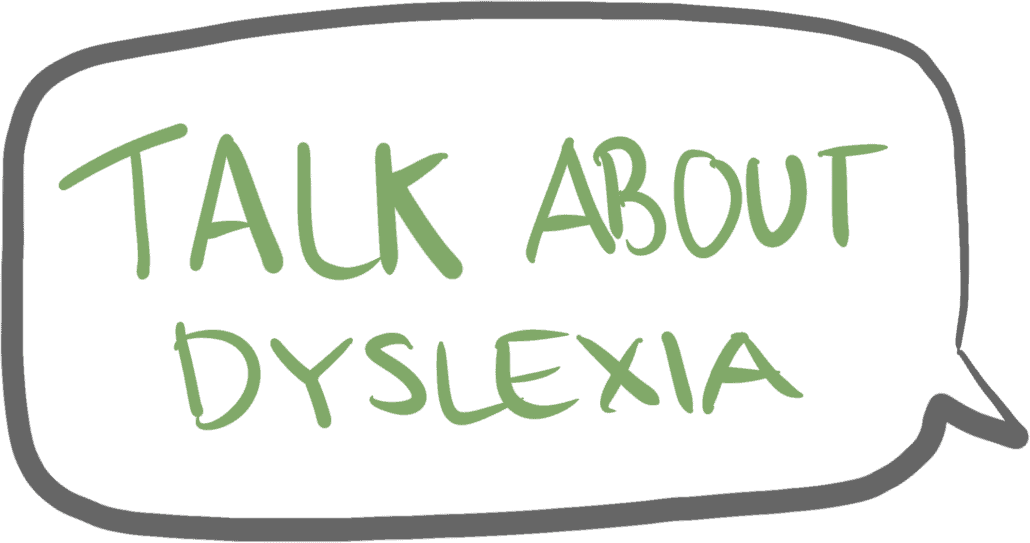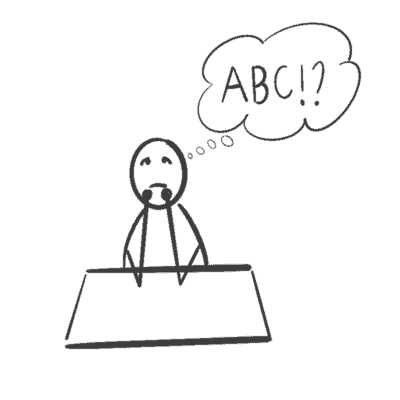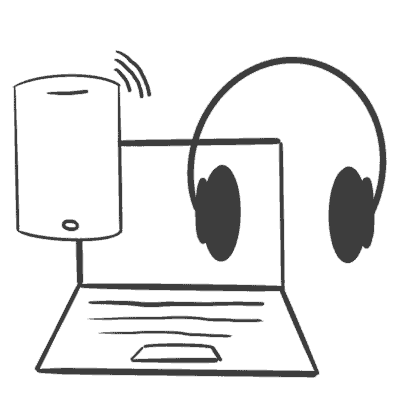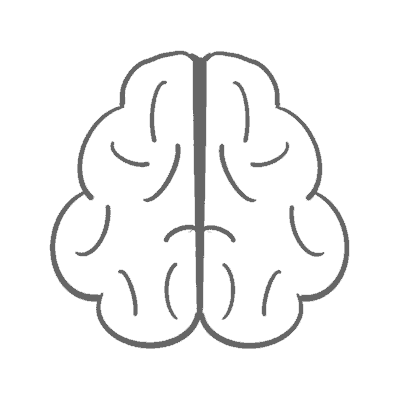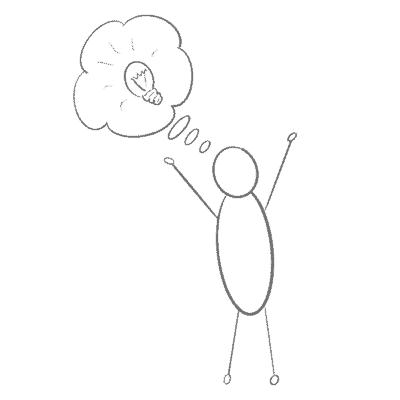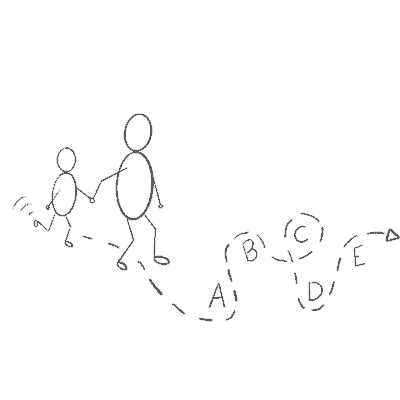Have you also heard that if you are dyslexic, you are creative? And good at using your hands?
It is the same as saying that because you can walk, you can become a world champion in race walking.
And that honestly doesn’t make sense, does it?
When you have dyslexia, it is difficult to read and spell. But otherwise, you learn in different ways, just as people without dyslexia do.
It means that you are not necessarily creative or good at using your hands.
Are you ready to learn how your dyslexic child learns?
Then let’s get started.
The “dyslexia box” does not limit your child’s educational opportunities
When I was in school, I was told that I should be creative and not hope to get any type of academic education.
Boom! I was put in a box. The “dyslexia box.”
I didn’t know what being creative meant, and I thought it was about drawing. That was my prejudice about being creative…
My teacher said it with good intentions to help me journey in a particular direction.
But I can say that it didn’t work.
Maybe you have also thought something similar about your dyslexic child? That your child should be creative and use their hands instead of reading many books and getting an academic education.
Or maybe a teacher or another adult has said this to your child?
There is no doubt that adults mean it in a friendly and caring way when they tell a child about their prospects for the future.
But your dyslexic child can end up believing in it if their surroundings keep saying that there are fewer educational opportunities for dyslexic people.
So, the first thing you can do as a parent is to state that dyslexia won’t close any doors for your child.
It is interests, abilities, efforts, and learning styles that influence where your child will fit the best. That is also the same for you and me.
Just like everyone else, your dyslexic child has their best way of thinking and learning.
For a child that is only taught in a way that does not fit their learning style, it can be challenging to get the most out of their education.
Therefore, I want to show you some learning styles and ways of thinking that you can use to help your child explore.
My child is dyslexic
“What is dyslexia, and what does it mean for my child?” Have you also been searching for answers to that?
Understand your dyslexic child
It can be challenging to be a parent and help with the homework without getting frustrated.
Use the apps and tools
Have you also thought about what apps and programs are best? Then your child could get their homework done without issues…
THE FOUR LEARNING STYLES
Learning styles are about the way knowledge is shared, so that your child learns the most from it.
There are four general learning styles.
We all have a preference for one of them. Or variations of them.
1 – Touching things (tactile)
Memory games are an excellent example of this learning style. Here, your child has to touch the pieces while putting two things together.
To collect and pull things apart is another way of learning by touching.
It can also be something as simple as using a yoyo, a fidget spinner, or a pen while you are learning something new.
A pen can be used to both draw and take notes. Or clicking, until the rest of the people in the room go crazy over the sound of it…!
It is all about using your hands to touch something while you’re learning.
2 – Moving around (kinesthetic)
This is about engaging in physical games, such as playing with a ball or roleplaying, while your child is learning.
Your child has to use their whole body while they learn. They can also walk around while listening to a book.
The need for activity while learning is not necessarily a sign that your child is not paying attention.
3 – Listening (auditory)
Maybe your child is good at listening to new knowledge and enjoys sitting and listening to the teacher in school.
This learning style also shows itself when you find your child is interested in, for instance, listening to a book.
Maybe your child often says, “Explain this to me!”
4 – Watching (visual)
Your child simply learns by seeing things. That can be done with a drawing, pictures, tables, and so on.
This learning style is interesting for dyslexic people. Even those without dyslexia learn visually and are great at learning by seeing a text. That is exactly what dyslexic people are not good at.
So, if your dyslexic child has a visual learning style, it is not the same as your child learning by seeing a text. Instead, your child learns by seeing pictures and similar stimulations.
Maybe your child is asking, “Can you show this to me?”
Your child has several preferences
Besides these four fundamental learning preferences, there are also a lot of other factors that are a part of your child’s preferred learning style.
It may be that you (and your child’s teacher) are getting frustrated over the fact that your child does not want to sit still while learning. We have designed most classrooms and homes with chairs and tables, and those are there to be used, right?
But it may be that your child feels much better about standing or lying down.
I have collected some examples of elements that your child may prefer, together with one of the four general learning styles.
| PHYSICAL ELEMENTS | EMOTIONAL ELEMENTS | SOCIOLOGICAL PREFERENCES | PSYCHOLOGICAL PREFERENCES |
| That your child wants: | That the situation demands your child: | That your child works: | Your child works: |
| certain conditions for sound | motivates themselves | alone | analytically (step-by-step) |
| certain conditions for light | is persistent | in pairs | holistically (must see the objective and bigger picture) |
| a specific temperature | is responsible | in small groups | impulsively |
| a certain physical posture (standing, sitting, lying down) | is structured | in big groups | reflectively |
| with an authority (e.g. a teacher) nearby your child can ask |
The dyslexic brain
Have you also been wondering if there is something wrong with your dyslexic child’s brain? That is, why the head cannot comprehend those pesky letters.
Accepting the dyslexia
Is your child also finding it difficult to talk about their thoughts and emotions when the letters are teasing them?
Motivation to read
Would you also like to motivate your child to read more? And is it difficult to find the right “carrot”?
HOW TO HELP YOUR DYSLEXIC CHILD WITH HOMEWORK
You may have been challenged and saddened over the fact that your child just can’t do their homework like other children in their class. Your child might come home time after time with homework that requires a lot of reading.
But what you can do is help your child figure out how they learn the best.
Which of the four general learning styles does your child have?
If your child learns by watching, you may have to help find a video online about the subject your child has to learn about.
If your child learns by listening, you may have to help your child get the texts read out loud—either through IT tools or audiobooks—instead of your child having to fight through the texts without help.
If your child learns through movement, you may have to walk outside and play or move while talking about the subject your child has to learn.
If your child learns through touch, it may be that different games can teach your child as much as text could.
It is all about learning by doing. There is no wrong learning style.
I first found out which learning style I preferred in school after I had already graduated. If I had received help and acceptance to explore it during my time in school, I could have used it to an even bigger extent and learned even more.
Another thing you can do is talk with your child’s teacher in their individual subjects. They are often happy to find videos, audiobooks, games, and similar things that your child can use in learning.
Or you can do some research online. You just have to be aware of who is delivering the material so you get something that has quality.
HOW TO HELP YOUR CHILD WITH THE THREE THINKING STYLES
Another way you can try to help your child when you are doing homework is to figure out your child’s way of thinking.
Our brains also have a preferred thinking style.
It means that we have certain types of questions we prefer because they fit our way of thinking the best.
Therefore, you can help to rephrase the questions in your child’s homework—to the extent that this is possible—to one of the following types.
| CREATIVE THINKING STYLE | RULE-FOLLOWING THINKING STYLE | ANALYTICAL THINKING STYLE |
| Your child is good at answering: | Your child is good at answering: | Your child is good at answering: |
| Create… | Who said…? | Compare… |
| Devise… | Summarise… | Analyse… |
| If you… | Who did…? | Evaluate… |
| Imagine… | When did…? | In your opinion… |
| Come up with… | What did…? | Why did…? |
| How would…? | How did…? | What was the reason for…? |
| What if…? | Repeat… | What is meant by…? |
| Describe… | Criticise… |
People with dyslexia can easily be in the two last categories, and you shouldn’t be worried if your child is not good at responding to the creative questions.
Thinking style can also vary depending on the task and situation, and it shows when you need to learn new material and after having learned it.
Thinking style can be refined, and you can, for instance, figure out if you prefer working with details and specific things or if you prefer to work with the bigger picture on a general and abstract level.
I’ve given you a bit to think about…
And, no stress—you don’t have to analyze your child’s learning style and hand in the assignment on Monday.
I hope you can see that there are several ways to learn, and it is not just letters that can ensure your child’s success in learning and reaching their goals.
It is all about exploring how you learn the best. And keep trying new things if the first try has failed.
If your child’s learning style, thinking style, efforts, and interests fit with academic education, then there are many apps and tools to compensate for dyslexia so that your child can use their own way of learning to become what they want.
If your child’s learning style, thinking style, efforts, and interests fit in more with creative education, then that’s what your child should go for.
There are no limits. It is about finding your own way to get the education you want.
The joy of learning new things
Feelings are the primary motor for learning. Do you also wish that your child would be more eager to learn new things in school?
Difficulty with learning how to read
Does my child have reading difficulties or dyslexia? You can see that your child is struggling with the letters, but how does your child progress?
DO YOU KNOW WHAT CREATIVITY IS?
It is “the use of imagination or original ideas to create something; inventiveness” (The Oxford Dictionary, 2020)
So, you can be excellent at drawing in technical terms, yet still not be creative if you cannot come up with new ideas to express through the drawings.
At the same time, there are thousands of topics that do not revolve around using your hands when you are getting new ideas and expressing them.
When I was in school, I didn’t quite understand it, but now I have found out how I can be creative.
I have written three books.
One about life in school, one about the dyslexic boy Michael, and one about Nikolaj, who has reading and spelling difficulties.
First, I had an idea for a story. Afterward, I wrote it down in small steps.
You and your child can decide on whether you think the books are creative.
But I will promise you that you will learn more about your child and their dyslexia.
Jesper Sehested
Dyslexic, author, speaker and mentor
Four general learning styles. (Rasmussen, 2012)
Preferred thinking style (Sternberg, 2001)
